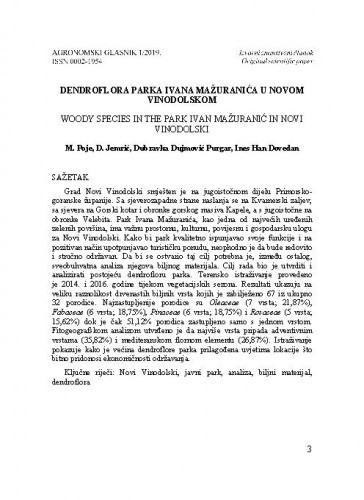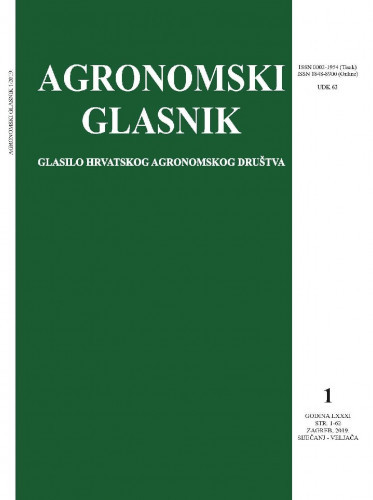Sažetak
Grad Novi Vinodolski smješten je na jugoistočnom dijelu Primorskogoranske županije. Sa sjeverozapadne strane naslanja se na Kvarnerski zaljev, sa sjevera na Gorski kotar i obronke gorskog masiva Kapele, a s jugoistočne na obronke Velebita. Park Ivana Mažuranića, kao jedna od najvećih uređenih zelenih površina, ima važnu prostornu, kulturnu, povijesnu i gospodarsku ulogu za Novi Vinodolski. Kako bi park kvalitetno ispunjavao svoje funkcije i na pozitivan način upotpunjavao turističku ponudu, neophodno je da bude redovito i stručno održavan. Da bi se ostvario taj cilj potrebna je, između ostalog, sveobuhvatna analiza njegova biljnog materijala. Cilj rada bio je utvrditi i analizirati postojeću dendrofloru parka. Terensko istraživanje provedeno je 2014. i 2016. godine tijekom vegetacijskih sezona. Rezultati ukazuju na veliku raznolikost drvenastih biljnih vrsta kojih je zabilježeno 67 iz ukupno 32• • •

 Agronomski glasnik : glasilo Hrvatskog agronomskog društva : 81,1(2019) / glavni i odgovorni urednik, editor-in-chief Ivo Miljković.
Agronomski glasnik : glasilo Hrvatskog agronomskog društva : 81,1(2019) / glavni i odgovorni urednik, editor-in-chief Ivo Miljković.